List of Authors
>>About this blog
Recent blog post
|
[Sam]
May 27, 2014 14:00
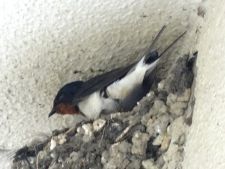 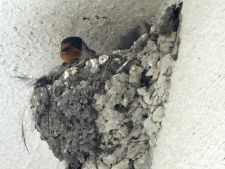
 On May 23, Mr. Kaihiko Kaneko, the secretary of the Urban Bird Study Group, the author of "Ginza Swallows", was invited as a lecturer, and a field event "Ginza Swallow Observation Meeting" hosted by Nature Information Plaza Marunouchi Suzurikan was held. . On May 23, Mr. Kaihiko Kaneko, the secretary of the Urban Bird Study Group, the author of "Ginza Swallows", was invited as a lecturer, and a field event "Ginza Swallow Observation Meeting" hosted by Nature Information Plaza Marunouchi Suzurikan was held. .
"Ginza Swallows" is a 30-year study of the lovely surprising ecology of urban swallows by Kaihiko Kaneko for 30 years.
Since ancient times, swallows have been popular as a symbol of Masutori.
Every spring, swallows come to Ginza from Southeast Asia, a wintering area.
The distance of the trip is several thousand kilometers.
However, the number has decreased dramatically in recent years.
Currently, there are three nesting locations in Ginza, which were nine locations 30 years ago,: Matsuya East Building (Ginza 3), Toto Hire Ginza Sales Office (Ginza 8), and Musashiville (Ginza 8).
As a cause
①The increase in the number of foreign enemy crows
②The number of places where nesting can be carried out has decreased due to the rebuilding of buildings.
(The rough concrete walls and beams, scaffolding like fluorescent lamps, deep eaves and eaves are lost.)
③The nest was dropped by a person who hates feces due to bird flu, etc.
It is conceivable.
As a unique ecology of swallows
①Creating a unique nest that uses only soil and dead grass
②A foraging method that catches flying insects, called so-called "swallow return"
(By the way, the swallow's food in the city center is 1 bird 2 bees ... bees of the Ginza bee project
They seem to be incorporated into the ecosystem.
Drinking scene while flying over the water
③They specialize in flying fast, their legs are short and unsuitable for walking, except when seeking mud from nest materials.
Seldom descends on the ground
In addition, above all, breeding forms that make good use of the existence of four people.
It's a good idea.
The swallows are somehow alive in Ginza.
①There are many street trees that serve as a source of insects, and there is a natural treasure trove of the Imperial Palace nearby.
②Many have been reclaimed, but there is still a nearby waterside (gliding on the surface of the water when drinking)
At the same time, side 3 reflecting the hearts of people (when repainting the wall, care not to drop the nest, or place it on a new nest stand on the wall without discarding the old nest when replacing the ceiling, etc.) Accept swallows and warmly watch the nest
It is said that there is a great deal of effort.
Once again, the "people's involvement" and empathy regarding the preservation of the ecological environment are reminded.
By the way, the swallow is 17cm in length and 32cm in length.
The throat and forehead are red, the belly is white, the black horizontal band on the chest, the elongated and pointed wings, and the tail feathers are deeply cut off.
Female tail feathers are shorter than males.
It is said that tail feathers have the role of changing direction and brakes during flight.
It hatches in two weeks after incubating, and for another three weeks, after the parent swallows carrying food, they nest.
I hope you will come to this city again next spring.
And I would like you to show me the smart and agile flight again.
[Sam]
May 27, 2014 09:00
 
Operation course Far view from Shibaura Minami Wharf Park to Harumi district
The Port of Tokyo opened as an international trading port on May 20, 1941.
"Tokyo Minato matsuri" celebrates the opening of the port, and various events are held on Saturdays and Sundays around May 20 every year with the Harumi Passenger Terminal as the main venue.
This year, the 66th anniversary, was held for two days on May 24 and 25.
At the venue
①PR corner of an organization related to Tokyo Port entitled "Look! Touch! Tokyo Port"
②"Firefighting Pageant of Water" by Tokyo Fire Department
③Open to the public of rare ships "Akihiro", "Umiryu" and "Umitakamaru"
④The public release of the fire boat "Miyakodori"
⑤Port stage traction
There are plenty of events.
The Port of Tokyo has port facilities that support the lives and industry of 40 million people in the Tokyo metropolitan area, while the coastal area has a wonderful view of the waterside city.
There are so-called "restaurant boat" operating at Tokyo Port and mini-tours to enjoy Tokyo Port from both the sea and land by taking a bus that goes around the viewpoints of Tokyo Port, and this time we will introduce "land" edition.
The course is Harumi venue-Tokyo Gate Bridge (vehicle window)-Aoumi Minami Wharf Park (get off: about 20 minutes)-Rainbow Bridge (vehicle window)-Shibaura Minami Wharf Park (get off: about 15 minutes)-Harumi venue.
It takes about 2 hours.
It was operated four times in the morning and afternoon on both days, but I heard that there were about four times the application.
Although the weather was fine on the first day, the sky was slightly hazy and the view was somewhat difficult, but you can enjoy the view at the viewpoint and get a glimpse of the aspect of modern ports being created as a system with various functions. Was.
On this day, the "Firefighting Pageant of Water" is also looking away from the opposite bank during the tour.
  
Tokyo Gate Bridge Aomi Container Pier Qinghai South Wharf Park
  
Daiba Park (Sandaiba) Rainbow Bridge Water Fire Service Pageant
[Sam]
May 26, 2014 09:00
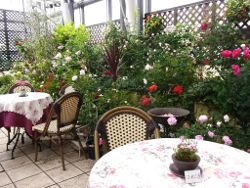 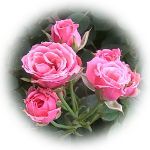 The annual "Rose Garden" is being held at the salon space "Royal Room" with terrace on the 10th floor of FANCL Ginza Square (Ginza 5), and the venue is filled with colorful rose flowers. The annual "Rose Garden" is being held at the salon space "Royal Room" with terrace on the 10th floor of FANCL Ginza Square (Ginza 5), and the venue is filled with colorful rose flowers.
Date: May 23-30 (11:30-18:30)
This year's theme is "Hospitality with fragrant roses"
During the period, members of the Musashino Rose Association also set up “Rose Consultation” and “Corsage Mini Lessons”, and they can enjoy live performances on weekends.
Roses are counted as three major flowers along with chrysanthemums and carnations, and have been loved around the world since ancient times.
Currently, it is supplied to the market throughout the year through house cultivation.
Depending on the tree shape, Bush (grove), shrub (semi-vine), climbing (vine);
Depending on the number of petals, single bloom, semi-double-flowered, double bloom;
Depending on the flower shape, sword valve, semi-sword valve, round valve, flat bloom, high core bloom, cup (cup) bloom, rosette bloom, quarterlet bloom, bonbon bloom;
They are classified into such categories.
Flower colors are also red, pink, orange, yellow, white, blue and black.
I hear that miniature roses have become more popular in recent years due to their compactness.
Why don't you enjoy a little elegant moment under the pale sunlight of spring in a petit garden with a sweet scent of roses 40 meters above the ground?
The "hydrangea garden" will be held from June 12 to 18.
    
    
[Sam]
May 21, 2014 09:00
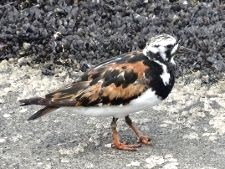 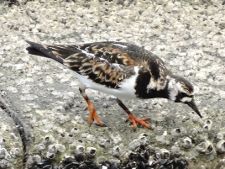
<Natsubah> <I'm Natsuha>
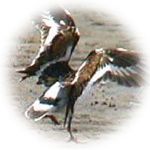 The water terrace at the bottom of Ishikawajima Park is full of jogging, walking, and dog walks. The water terrace at the bottom of Ishikawajima Park is full of jogging, walking, and dog walks.
During this season, at low tide, if you look closely at the rocky shores of the water, you can see ruddy turnstone (ruddy turnstone) moving around and foraging.
The origin of the Japanese name is that the summer feathers with a flashy reddish brown and black (like a triple cat) pattern on the back and wings are regarded as Kyoto's kimono.
♂In summer feathers, the white and black vertical spots at the top of the head are clear, and the reddish brown part on the upper surface of the body is vivid and has strong redness.
♀In summer feathers, the upper part of the head is mixed with grayish-brown, and the reddish-brown part on the upper surface of the body is smaller than mm and has weak redness.
(By the way, winter feathers are black-brown on the head and the upper surface of the body, have a reddish color, and have a plain color.)
It breeds in the Tundra area in northern Eurasia and northern America in summer, and is said to winter over the coasts of South Asia, Africa, Central and South America and Oceania in winter. In Japan, as a traveling bird, it flies as a relay point mainly in spring, mainly in May, and autumn mainly in September, and is observed in tidal flats, coasts, paddy fields, etc.
The total length is about 22cm.
A sloppy body shape.
Black and short beak.
Orange legs.
The squeal is "Geregret."
When flying, the white part of the wings, waist and tail stands out.
In addition to surface foraging, it seems to catch small animals lurking underneath by turning or shifting pebbles, earth lumps, shells, and seaweed lumps with beaks.
The English name (Ruddy) Turnstone is associated with foraging habits.
If you have the opportunity to go to the waterside of tidal flats and reefs during this season, be careful and look for it.
You may be able to meet an unusual, small "Kyojo"!
[Sam]
May 16, 2014 09:00
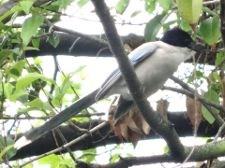 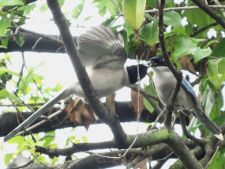
At this time, every time you pass through Tsukuda Park, you often see a few nagas flocked, singing with a slightly hoarse voice, such as "Ge", "Ge", and "Ge", and flying around.
(It is said that in the spring, it is also observed that they screamed with an adorable voice such as "Kuriri ...")
This time, I found pom, which I thought was the turn.
Apparently, May-July seems to be the breeding season.
As the name comes from, Onaga has a long tail feather, a smart body shape, and a neat feather color, but surprisingly a resident bird belonging to the crow family.
It is also interesting that the distribution area of Onaga is considered to be two distant regions (enclave distribution) at both east and west ends of the Eurasian Continent.
In Japan, it is currently inhabited locally north of central Honshu and is very common in the Kanto region, but it is said that there are many places where this species is not distributed in neighboring areas.
They live in mountains, villages, green areas, parks, etc., act in flocks, and feed is considered omnivorous.
The body length is 34-39cm, the tail feather is 20-30cm, and the head and body are large starlings.
Black as if you were wearing a hood completely from the tip to the back of the head.
It is grayish white from the neck, throat to the chest.
The wings and tail feathers are blue-gray, the back is pale grayish brown, and the same sex color.
When flying, the long tail stands out well, and it looks more gliding than flying.
In addition, like other birds of the Crow family, they have high learning ability and are very cautious.
In addition, it has been reported that they are often nested in cuckoos.
[Sam]
May 13, 2014 09:00
 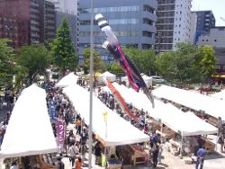
 On May 10 and 11, "marche of the Sun" was held at Tsukishima Daini Children's Park. On May 10 and 11, "marche of the Sun" was held at Tsukishima Daini Children's Park.
At the Aozora Market, which started in September 2013, about 100 stores from all over Japan open each time with the theme of local vegetables and seasonal ingredients according to the season, and is crowded with nearly 20,000 visitors, making it one of the largest urban marche in Japan.
The theme this time is "Koshu Wine and Japanese Food".
"Koshu Wine" is gaining worldwide reputation, including the registration of "Koshu" as a grape variety in the international wine screening organization OIV in 2010, receiving numerous awards at international wine competitions, and starting exports to Europe.
On the other hand, Japanese food was registered in UNESCO Intangible Cultural Property last year.
Various combinations of "Koshu wine" and "Japanese food" and how to enjoy it are proposed.
The wineries that participated this time were 1 Sadya in Yamanashi Prefecture, 2 Yamanashi Ryohin, 3 East Chen Yoshu, 4 Central Wine, 5 Maruki Wine, 6 Katsunuma Wine, 7 Grape Shop kofu, 8 Tsuruya Brewery 9 Sanyo Brewery 10 Yamanashi Fermentation.
Yamanashi Prefecture's wine culture includes "Isho bottle wine", "Wine drink in teacup", and "Wine drink with Japanese food".
According to the history, in Yamanashi, wine was encouraged and produced as part of a policy of breeding and industry in the early Meiji era. Yamanashi's wine culture is said to have started with Issho bottles, and gradually penetrates from ceremonial occasions to daily dinners. At one time, it was shipped outside the prefecture, but with 720/750ml becoming mainstream, most of it now is said to be for local people.
In addition, it is common to drink wine with a glass, but it is said that many people drink wine in the familiar "teacup" because of the flow of sake.
(A cup of tea bowl is also attached to the side of the display of the one sho bottle in the booth.)
The roots of "appetizers" in the local area are said to be "boiled" or "pickles", but the characteristic of the taste of "Koshu wine" is "delicacy", "decreased" and "cooperation". In other words, it seems that it is easy to match with any dish.
"Issho bottle wine to drink in teacup with Japanese food" "Koshu wine style" is also fun to interact with different cultures.
① ② ③
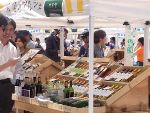 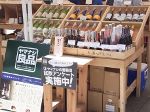 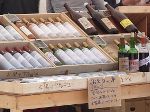
④ ⑤ ⑥
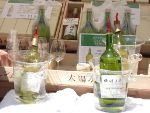 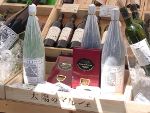 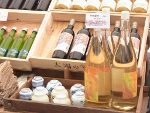
|
Links
|
On May 23, Mr. Kaihiko Kaneko, the secretary of the Urban Bird Study Group, the author of "Ginza Swallows", was invited as a lecturer, and a field event "Ginza Swallow Observation Meeting" hosted by Nature Information Plaza Marunouchi Suzurikan was held. .























 The water terrace at the bottom of Ishikawajima Park is full of jogging, walking, and dog walks.
The water terrace at the bottom of Ishikawajima Park is full of jogging, walking, and dog walks.










